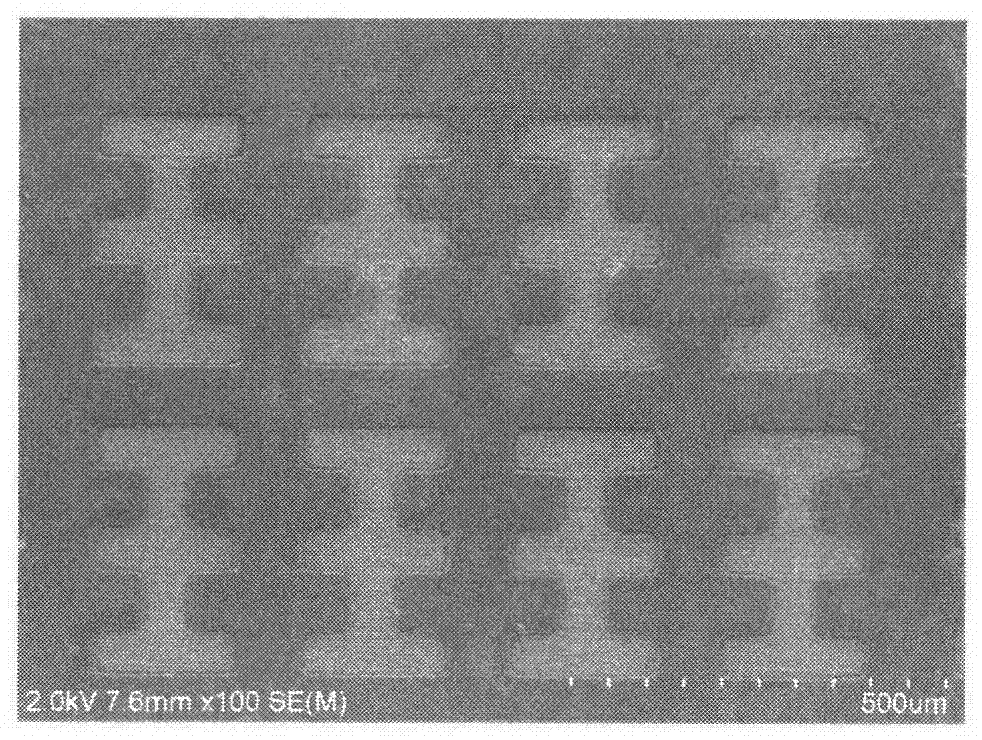Alkali-soluble photosensitive resin prepared from maleic anhydride ring-opening modified branched oligomer and photoresist composition thereof
A technology of maleic anhydride and photosensitive resin, applied in the field of ultraviolet light curing, can solve the problems of affecting the resolution of photoresist, easy gelation, adding special reagents, etc.
- Summary
- Abstract
- Description
- Claims
- Application Information
AI Technical Summary
Problems solved by technology
Method used
Image
Examples
Embodiment 1
[0015] In a three-necked flask equipped with a stirrer, condenser and thermometer, add 18.06g propylene glycol methyl ether acetate, 2.15g methacrylic acid (MAA), 6.54g benzyl methacrylate (BZMA), 0.56g maleic anhydride (MA), 0.13g p-vinylbenzylmercaptan (VBT), and 0.34g azobisisobutyronitrile were mixed uniformly, then reacted at 90°C for 24 hours, and then kept to obtain product A. Raise the temperature to 110°C, mix 0.007g of polymerization inhibitor hydroquinone (HQ), 0.017g of catalyst (TPP) and 0.746g of hydroxyethyl acrylate (HEA) evenly, then drop them into system A at a constant speed, and keep warm for the reaction After 6 hours, product B was obtained.
[0016] Photoresist composition: 58 parts of an alkali-soluble photosensitive resin, 6 parts of a photoinitiator, 15 parts of a reactive diluent, 17 parts of a solvent, and 4 parts of a pigment. After mixing, magnetically stir until evenly mixed to obtain a liquid photoresist . Coat the photoresist on the copper pl...
Embodiment 2
[0018] In a three-necked flask equipped with a stirrer, condenser and thermometer, add 18.84g propylene glycol methyl ether acetate, 2.15g methacrylic acid (MAA), 6.54g benzyl methacrylate (BZMA), 0.56g maleic anhydride (MA), 0.54g p-vinylbenzylmercaptan (VBT), and 1.23g azobisisobutyronitrile were mixed uniformly, and reacted at 90° C. for 24 hours, and the product A was obtained by heat preservation. Raise the temperature to 120°C, mix 0.007g of polymerization inhibitor hydroquinone (HQ), 0.017g of catalyst (TPP) and 0.746g of hydroxyethyl acrylate (HEA) evenly, then drop them into system A at a constant speed, and keep warm for the reaction After 6 hours, product B was obtained.
[0019] 58 parts of an alkali-soluble photosensitive copolymer, 6 parts of a photoinitiator, 15 parts of a reactive diluent, 17 parts of a solvent, and 4 parts of a pigment are mixed and then magnetically stirred until uniformly mixed to obtain a liquid photoresist. Coat the photoresist on the cop...
PUM
 Login to View More
Login to View More Abstract
Description
Claims
Application Information
 Login to View More
Login to View More - R&D Engineer
- R&D Manager
- IP Professional
- Industry Leading Data Capabilities
- Powerful AI technology
- Patent DNA Extraction
Browse by: Latest US Patents, China's latest patents, Technical Efficacy Thesaurus, Application Domain, Technology Topic, Popular Technical Reports.
© 2024 PatSnap. All rights reserved.Legal|Privacy policy|Modern Slavery Act Transparency Statement|Sitemap|About US| Contact US: help@patsnap.com









